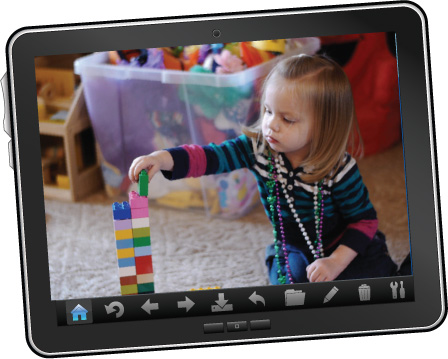5.9 Applications
1. Keep a food diary for 24 hours, writing down what you eat, how much, when, how, and why. Then think about nutrition and eating habits in early childhood. Did your food habits originate in early childhood, in adolescence, or at some other time? Explain.
2. Obtain permission and then observe young children play. Note the motor skills that the children demonstrate, including abilities and inabilities, and keep track of age and sex. What differences do you see among the children?
3. Replicate one of Piaget’s conservation experiments. The easiest one is conservation of liquids (illustrated in Figure 5.5). Work with a child under age 5 who tells you that two identically shaped glasses contain the same amount of liquid. Then carefully pour one glass of liquid into a taller, narrower glass. Ask the child which glass now contains more or if the glasses contain the same amount.
>>ONLINE CONNECTIONS
To accompany your textbook, you have access to a number of online resources, including LearningCurve, which is an adaptive quizzing program; critical thinking questions; and case studies. For access to any of these links, go to www.worthpublishers.com/
- Brain Development in Early Childhood. Animations illustrate the macroscopic and microscopic changes as children’s brains grow.
- Stolen Childhoods. Some children, because of poverty or abuse, never have the opportunities for schooling and nurture that many of us take for granted. Children in a variety of difficult circumstances, from sex workers to workers in carpet factories, tell their stories in a variety of video clips.
